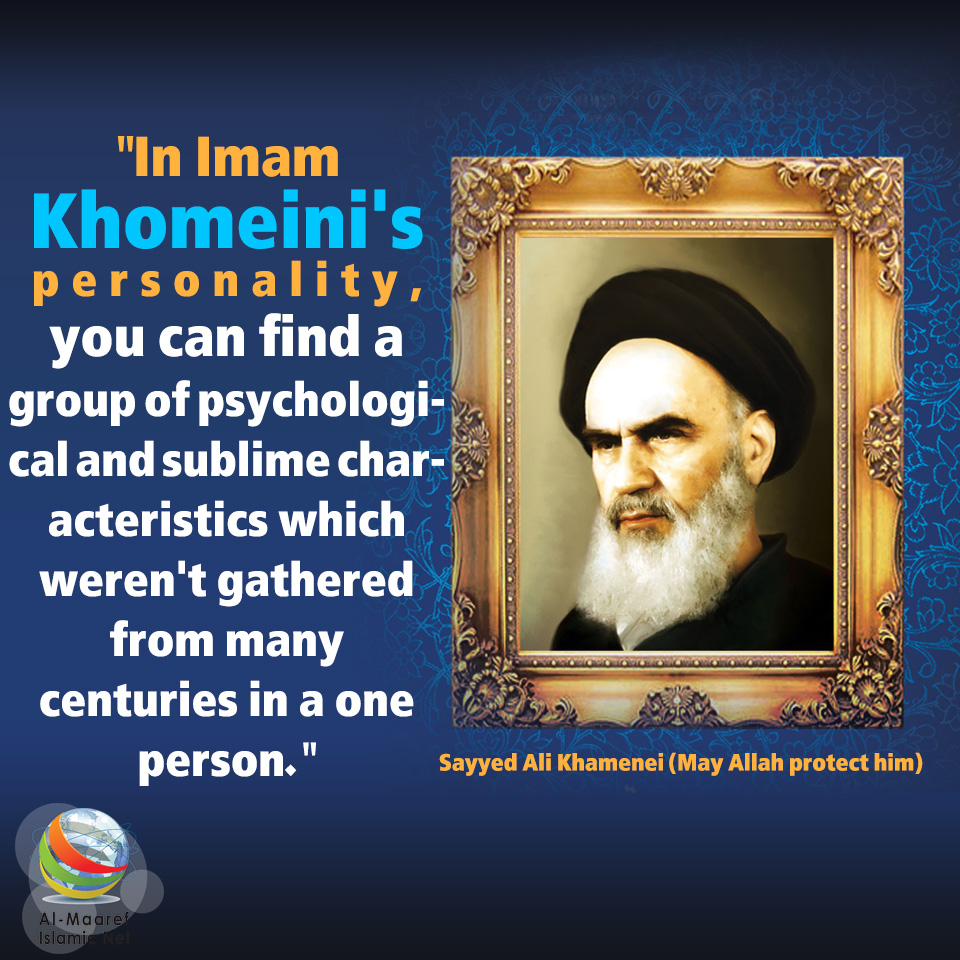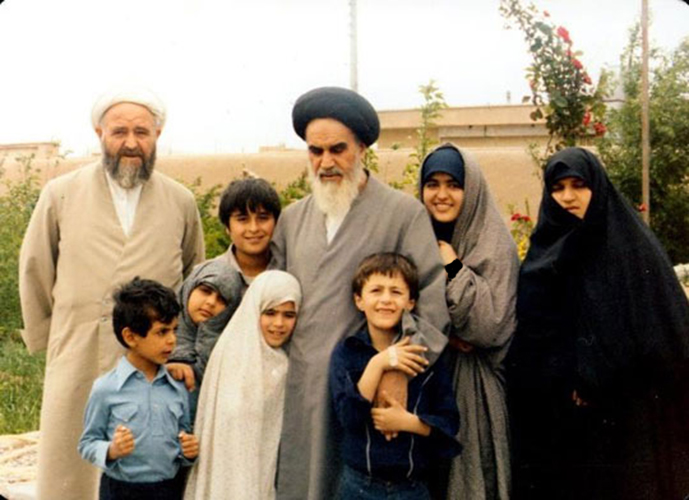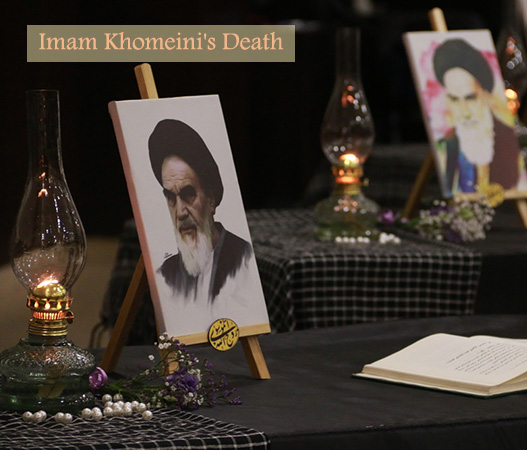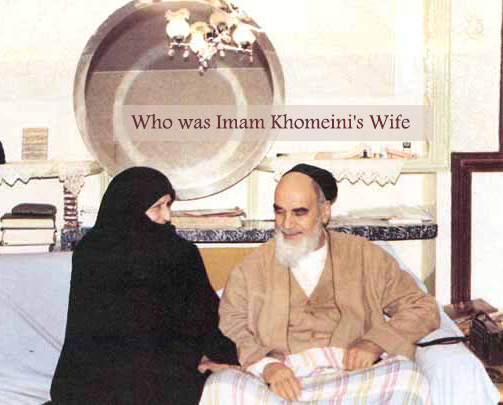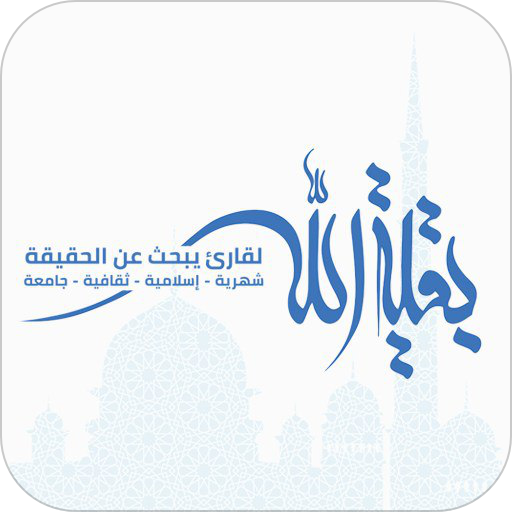Biography of Imam Khomeini
1.Childhood and Parents
Imam Khomeini was born in the town of Khomein, about 350 kms south of Tehran in the central province, on the 20th of Jamadi-Al-Thani, the year 1320 L.H., (September 24, 1902). Also the birth anniversary of Fatima Zahra, the daughter of Prophet Mohammea (peace be upon him). He was named Ruhollah. The sprit of God.
His father, Ayatollah Seyyed Mostafa Musavi, assumed the religious leadership of the people of Khomein and the nearby villages after his return from the Islamic theology center in the city of Najaf, Iraq. But only a few months after Ruhollah was born, his father was fatally wounded by bandits on the road to Arak, north of Khomein. He was 47.
Imam Khomeini`s mother, Hajar, was also of a prominent religious family. She was the daughter of an Ayatollah Mirza Ahmad, a scholar and teacher in Karbala and Najaf theological centers, in Iraq. She also passed away when the Imam was only 15.
2. Education
Despite these personal disasters, the Imam remained resistant and began using his talent and intelligence in learning Islamic sciences --first under his brother, Ayatollah Seyyed Morteza Pasandideh. Later he went to the theological school in Arak where he attended the classes of the prominent scholar of his time, Haj Sheikh Abdulkarim Haeri Yazdi. He also mastered Arabic literature.
After top theologians moved from Arak to the holy city of Qom, the Imam intensified his studies and completed the highest level of theology by 1927, and soon later was pronounced a mujtahid, qualified jurist, by his senior tutors. He specialized in various fields other than Fiqh (jurisprudence), including Philosophy, Irfan and Ethics.
3. Political Life before 1963
Known for his strong political views against the regime, the security agents of Reza Khan, the founder of the Pahlavi dynasty, were ordered to restrict the Imam's activities. But the Imam continued his gradual but firm effort to spread his enlightening message to masses.
After the death of Ayatollah Borujerdi, the paramount shia leader of the time, the Imam was chosen his successor by the Ulema and people. With this, his cultural Jihad against the monarchy gathered momentum in 1961, reaching a climax in 1963.
4. Uprising
On June 3rd of that year the Imam made a historical speech against the dependence of the Shah's regime on foreign powers and its support of the Israel. He also stressed on the role of the Ulema in society.
The Imam was immediately arrested on June 5th. But his powerful speech brought the people of Qom out into the streets. News reached other cities and for two days people in several major cities including Tehran, demonstrated against the Shah and in support of the Imam.
On June 5th, troops supported by tank were deployed crush the growing movement. Many are massacre and the Shah's dictatorial regime appeared to have achieved victory. But the seed of the Islamic Revolution had been planted.
5. In Exile 4/11/1964-3/10/1978
Following the Imam's arrest, the regime came under sever pressure from the Ulema and the massage. On November 4th, the Imam was sent into exile. He was first deported to Turkey and then to Iraq where he took up residence in Najaf.
Still determined to act according to his religious responsibility the Imam escalated his political struggle. This further added to the religious and political awareness and maturity of the Iranian people that was demonstrated by their angry and massive response to the murder of Haj Mostafa Khomeini, the Imam's eldest son, in the winter o f1977 by the agents of the Shah's secret police, the Savak.
The martyrdom of Haj Mostafa, as well as an insulting article printed in the daily Ettela`at on Savak`s order, prompted mourning a protest gathering in major cities.
Many people were killed in demonstrations and the regime decided that the only way to calm the situation was to prevent the Imam's inspirational message reach the people.
The Shah demanded and received cooperation from the Iraqi regime and the Imam was expelled on 3 October 1978.
6. Migration (Oct. 3, 1978-Feb. 1, 1979)
Imam Khomeini set out for Kuwait on October 3rd 1978 but was denied entry by the government. After consulting with his son, Ahamad, the Imam decided to go to France where he arrived on October 5th and a few days later took up residence in the small village of Neuphle le Chateau.
In Iran mass protests against the regime and the continued exile of the Imam grew to such an extent that it become impossible to control and suppress completely.
The Imam made frequent speeches, sent messages to the Iranian nation, gave numerous interviews to the media, outlining the liberation- seeking values and ideas of Islam and explained the framework of the Islamic state based on divine justice.
The ruling regime was facing a serious crisis. The West forced the Shah to leave Iran to allow the newly formed "liberal" Bakhtiar government to gain legitimacy in the eyes of the people. But the Imam still held the initiative: he was determined to return to Iran. The nation prepared for the greatest home coming ceremony in history.
The Imam left Paris for Tehran on 1 February 1979.
7. Return to Home 1/2/1979
The streets o Tehran was packed with millions of people, waiting enthusiastically to great the Imam.
The Plane carrying the Imam landed safely at Tehran's Merababd Airport. The Imam set foot on the Islamic homeland for the first time in more than 15 years. His first move upon arrival was to go to Behesht-e Zahra Cemetery to pay tribute to the martyrs of the Islamic Revolution.
Confident of victory, people rejected everywhere. The regime unleashed its last bullets. Love, courage, and martyrdom in the struggle led every step of the monarchical regime. The Islamic Revolution triumphed and true Mohammadan Islam spread its wings over Iran.
Everyday thousands of people rushed to see the Imam. An interim government was formed. The new state was gradually taking shape. The Imam insisted that the main institutions be set up. The people voted for the Islamic Republic and approved its constitution. Thus the first Islamic State after 1400 years was born.
8. The Islamic Republic of IRAN
After setting up the Islamic Republic of IRAN, Imam was no longer just a leader, but a caring, sincere, father. He even cared for those who have done wrong and lost their way. He was loved, even by the poor, the deprived and freedom fighters of other nations.
The Imam made most of his speeches during he period among 19979 - 1989. He gave out solutions, set the framework for principles of statement ship. He not only explain the virtues of religion and ethics, but detailed the aims of the Islamic Republic and its domestic and foreign policies.
9. Farewell, and Mourning
After ten years, at 22:22 Saturday night June 3rd, 1989, the Imam passed away. The news was broadcast the following morning, the sense of loss was unbearable.
Millions poured in from all part of country to participate in the biggest farewell in the history. The similar ceremonies were held, as well as in many Islamic countries and communities around the world.


